This insight piece, by our Northern Powerhouse Rail Director, Tim Wood, is based on a keynote address he gave at a Westminster Energy, Environment and Transport Forum policy conference.
Speaking at the event, which explored how to improve transport connectivity between the nations and regions of the UK, Mr Wood highlighted the importance of stakeholder collaboration to achieve passenger-focussed improvements in the transport system and called for transformational solutions to offset historical underinvestment in the North’s railway network.
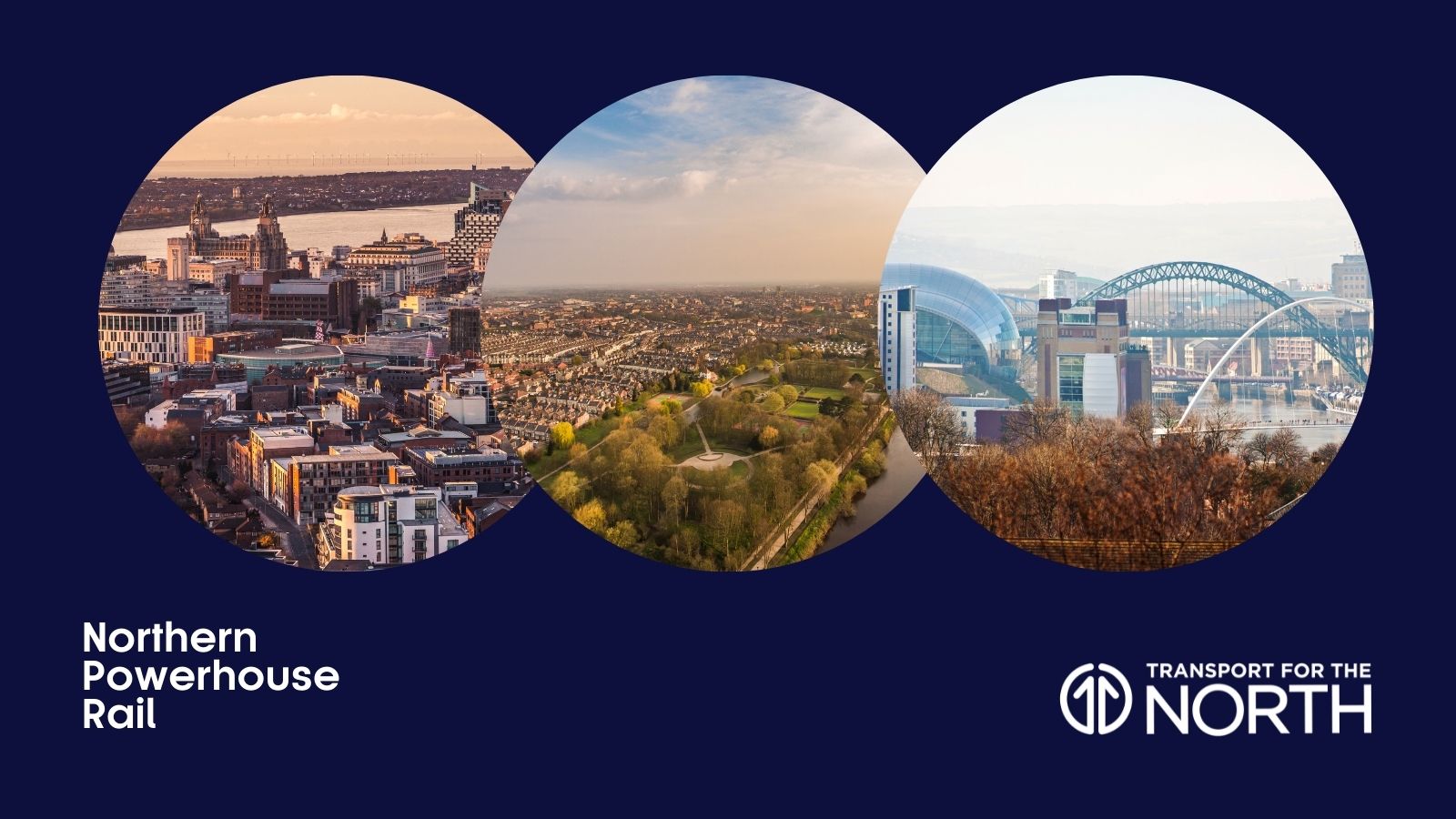
Read more: Connecting the people, communities and businesses of the North
For far too long the transport offering here in the North has been inadequate. A disjointed transport network that does not provide value for money to commuters. A system that means there is an over reliance on the car – something we must look to change in the years ahead if we are to reach net zero targets – and a railway network that does not deliver what it should in the modern world.
This is exemplified by the fact the average speed between key cities today by rail is around 54mph – that’s only 9mph faster than road. Staggeringly, the current journey time from Liverpool to Newcastle takes almost three hours. In that time, you could fly from Liverpool to Lisbon. This cannot be right.
The reason? Four decades of underinvestment in the region’s infrastructure has resulted in a railway bursting at the seams. A railway that is predominantly twin track, which means strained capacity, unreliability, slow and often overcrowded journeys.
To solve the problem for the long term, there needs to be significant investment. A level of commitment from the government that results in transformational improvements to the North’s railway. A set of interventions that will revolutionise connectivity east to west across the region and north to south, solutions that not only improve inter-city connectivity but ones that better connect the North to other regions, like the Midlands, and beyond.
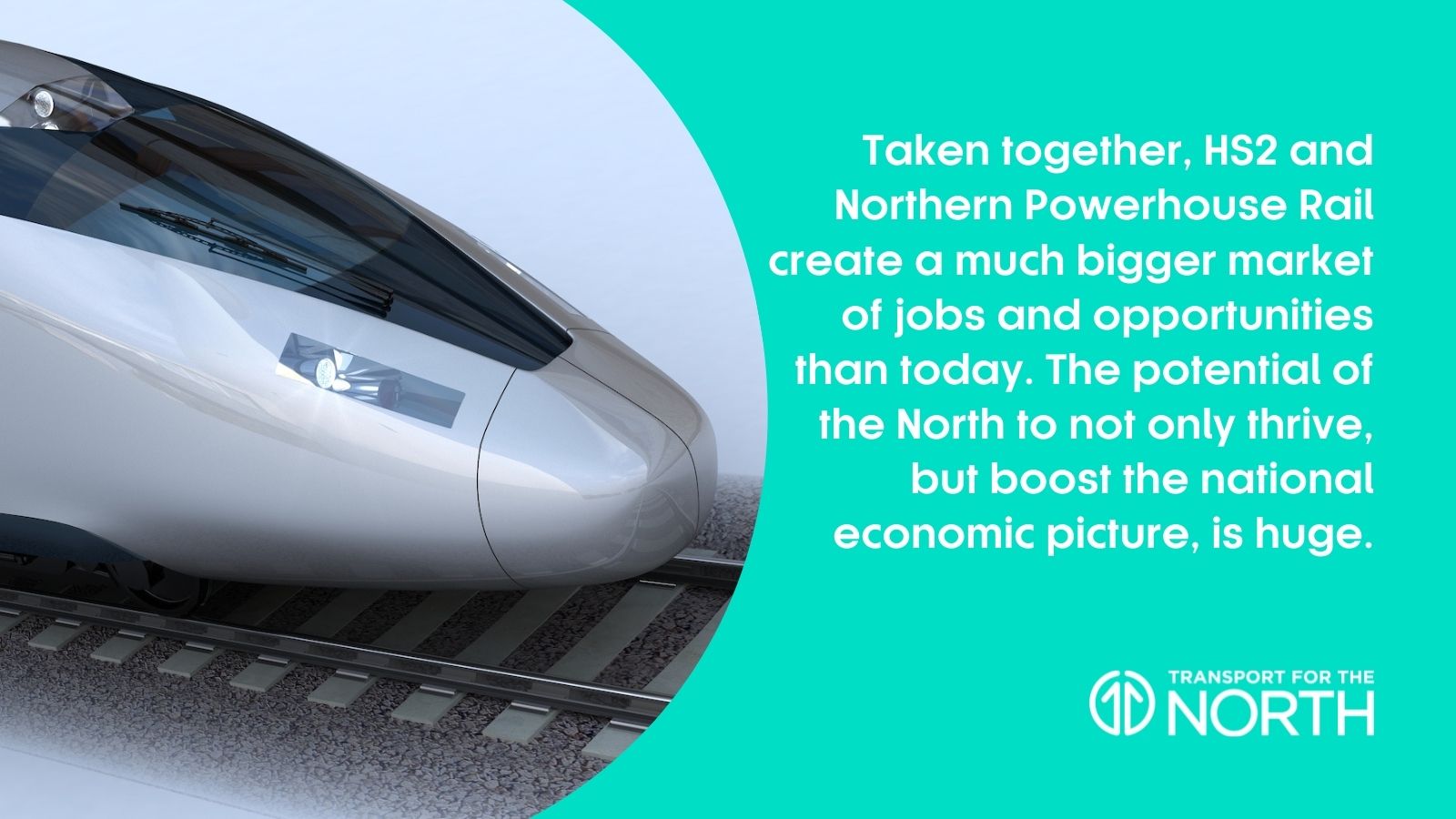
Two central pillars to this must be Northern Powerhouse Rail and High Speed Two. And they need to be delivered in full.
Northern Powerhouse Rail connects the east and west of the North of England, as well as HS2, which provides north to south connectivity. Taken together, HS2 and Northern Powerhouse Rail create a much bigger market of jobs and opportunities than today. The potential of the North to not only thrive, but boost the national economic picture, is huge.
These schemes are interdependent. They should be delivered together, in their entirety, to put right decades of underinvestment. For instance, Manchester Airport sits at the heart of the integrated Northern Powerhouse Rail and HS2 Phase 2b network. A new HS2/Northern Powerhouse Rail Manchester Airport station will provide faster, more frequent journeys between the airport and a wide range of destinations across the North.
Northern Powerhouse Rail assumes that HS2 will be delivered in full, including the eastern leg. The programme capitalises on eastern leg infrastructure to provide a much-improved railway connection between Sheffield and Leeds. Four Northern Powerhouse Rail services per hour will operate, which will share HS2 infrastructure to Leeds and provide dramatically better journey times.
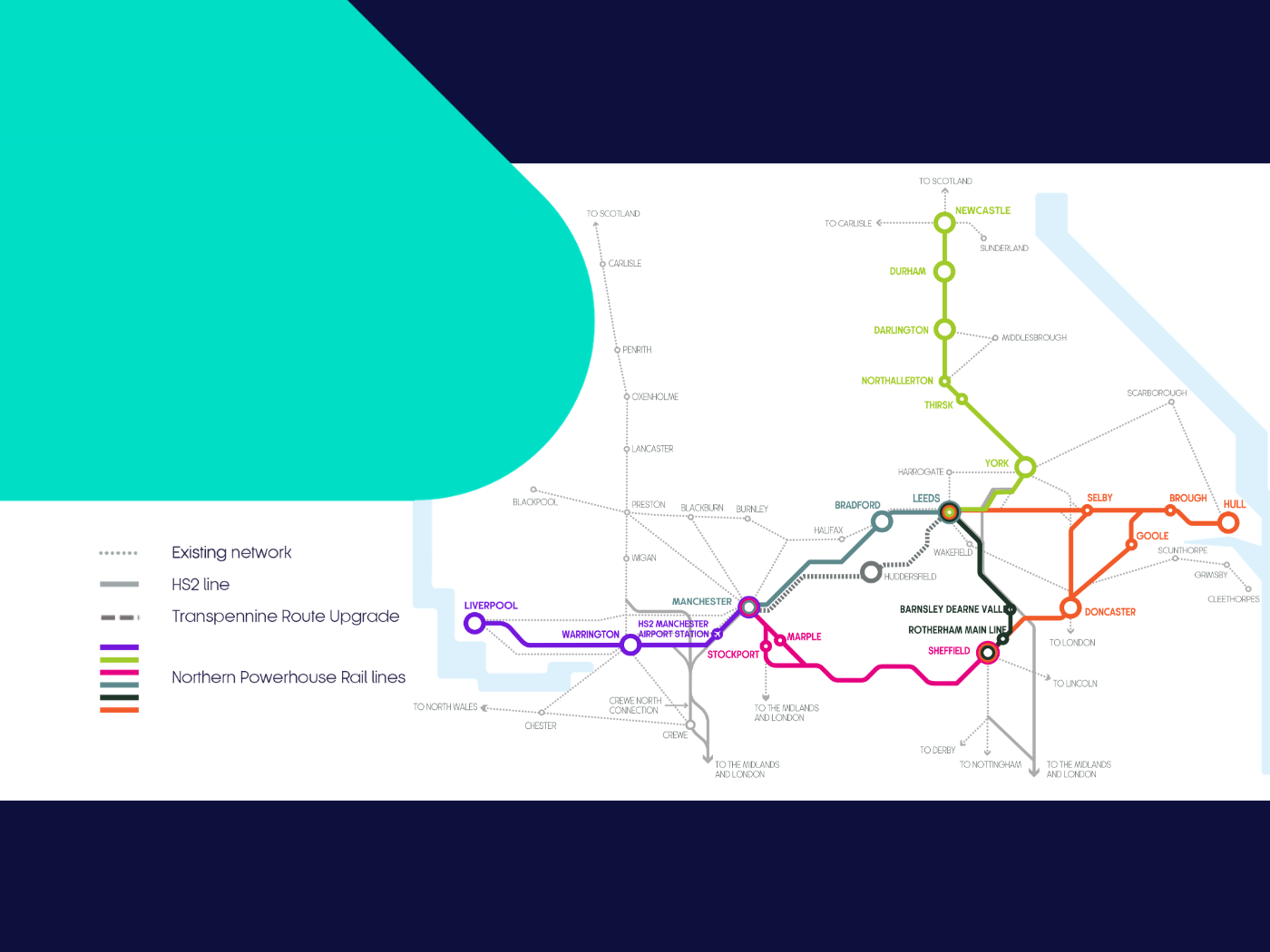
But these programmes are far more than an investment in infrastructure. Take Northern Powerhouse Rail, delivered in full it will better connect the major economic centres of the North, allowing the region to act as an integrated economy to generate opportunity, attract investment and create 74,000 new jobs, which will level-up the region and boost UK productivity – with up to £14.4 billion in gross value added each year to the economy by 2060.
The programme significantly benefits the environment, too. It will deliver clean, green, electrified rail services – immensely reducing the environmental impact of operating the network. In the North the car is the preferred mode of travel due to the poor, unreliable and slow service rail offers, Northern Powerhouse Rail changes that. Faster and more frequent journeys will shift an over reliance away from the car to rail and remove 58,000 cars off the road every day.
Transport for the North has been consistent and steadfast – the North needs both Northern Powerhouse Rail and HS2 delivered in full, this should not be an either-or choice. We are working collaboratively with colleagues in HS2 Ltd during development of Northern Powerhouse Rail and will continue to do so, to ensure that integration of these major rail schemes will be seamless and benefit our region and country for the next century and beyond.
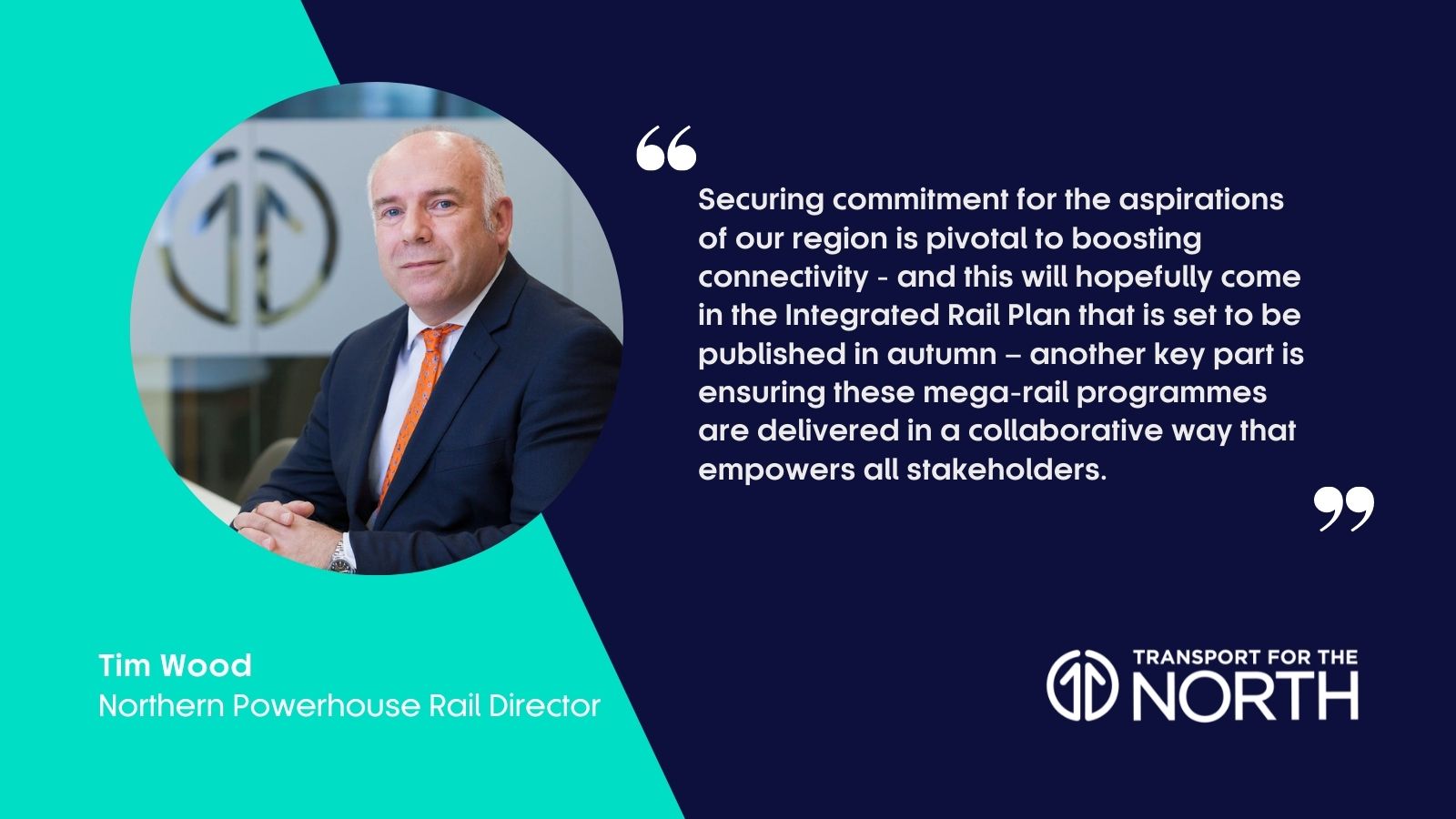
Securing commitment for the aspirations of our region is pivotal to boosting connectivity – and this will hopefully come in the Integrated Rail Plan that is set to be published in autumn – another key part is ensuring these mega-rail programmes are delivered in a collaborative way that empowers all stakeholders.
By that I mean collaboration at all levels with sub-national transport bodies, local transport authorities, mayors and other elected leaders, government, the business community and delivery partners. The role of sub-national transport bodies in fostering these relations is of paramount importance as we look to a better future.
Here in the North, Transport for the North brings together those stakeholders to speak with one voice, as a collective, on the transport needs of the region. Midlands Connect does the same for their region, as do others up and down the country.
Sub-national transport bodies simplify a complex way of working. In the North, we’ve seen, first-hand, how a disjointed and underinvested railway can constrain an economy, limit productivity, and strangle growth. The timetable chaos of 2018 highlighted to us all the dysfunctionality of a railway in which the responsibilities for track and train lay in different places. A railway where train operating companies too often looked to protect shareholders rather than passengers.
The recently announced Williams-Shapps Review provides us, as an industry, with an opportunity to deliver a better transport offering to passengers, and all of those stakeholders that I mentioned earlier have a role to play in us reaching the right place.
Transport for the North, with northern leaders, made the North’s voice clear when we fed into the review by Keith Williams. We said then, that track and train needed to be joined at the hip; we said there was clear need for a single guiding mind; we said that the railway should have more local accountability; we called for more transparency; and for a simpler and fairer ticketing offer.
I think the Williams-Shapps rail reform ambitions largely reflect that input – although there are still some areas where we would like to see further work – and none of this will happen overnight.
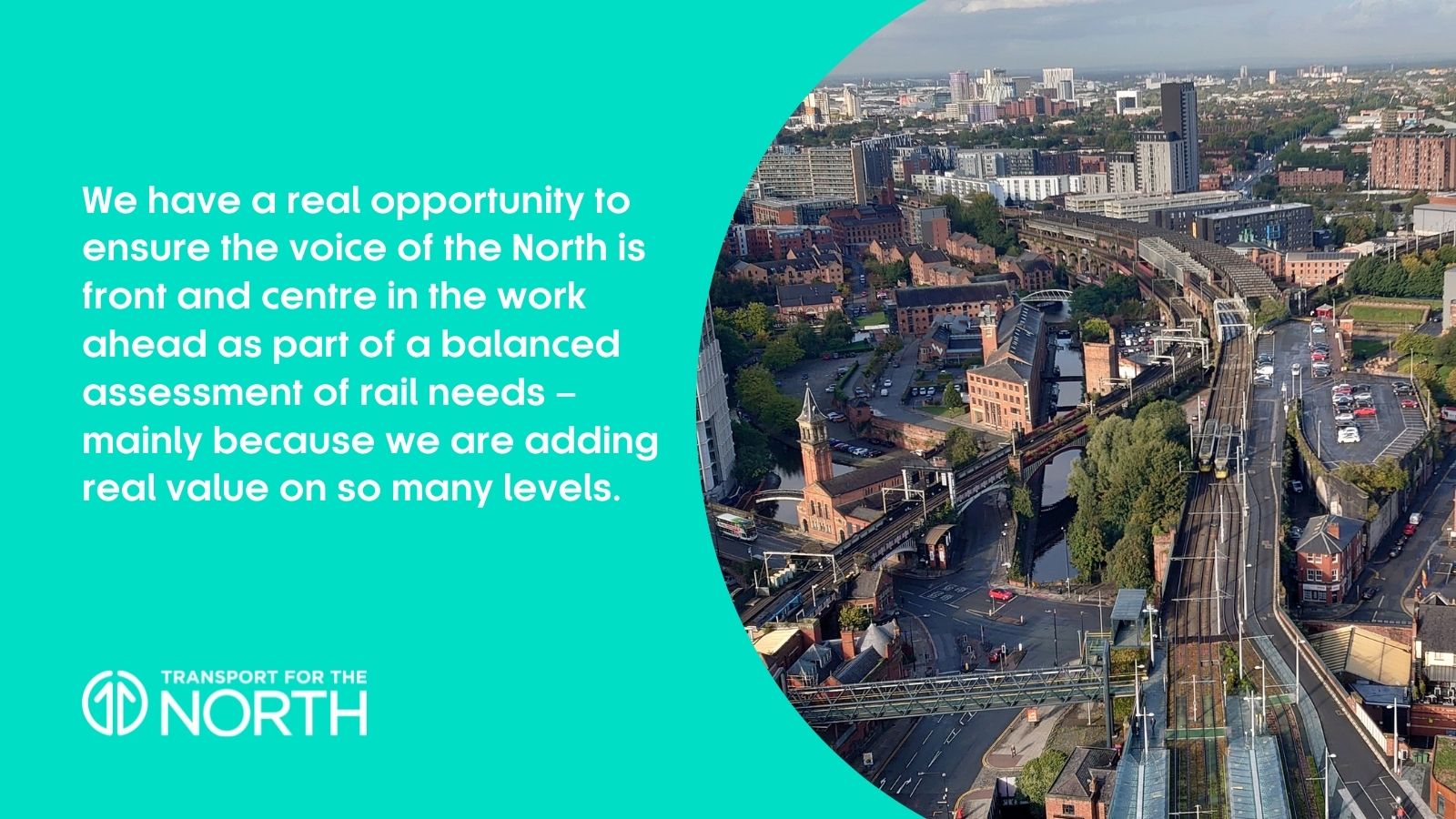
The green shoots of ambition are now beginning to show. Within Transport for the North we are now seeing greater and more meaningful collaboration on rail planning and investment, the work we are doing to tackle rail congestion in the Manchester area is a case in point.
We now have real opportunities to build on what we have achieved already, to help shape the new Great British Rail body, to work with the new national rail contracts and to actively deepen the link between track and train across our region. We have a real opportunity to ensure the voice of the North is front and centre in the work ahead as part of a balanced assessment of rail needs – mainly because we are adding real value on so many levels.
We are already working closely with colleagues within the Department for Transport (DfT) in evidencing and developing the strategic case for investment in the North. We are already calling-out where tax-payers money can be made to go further and generate the best returns.
The DfT have made clear that the door is open to us and we now need to grasp the moment. It’s not going to be easy – but at last we have a better system to work with – a system that should at last bring track and train together in the way they should be.
